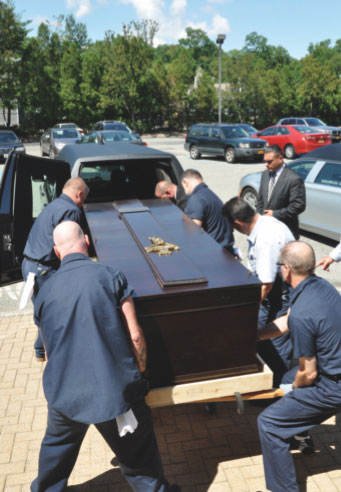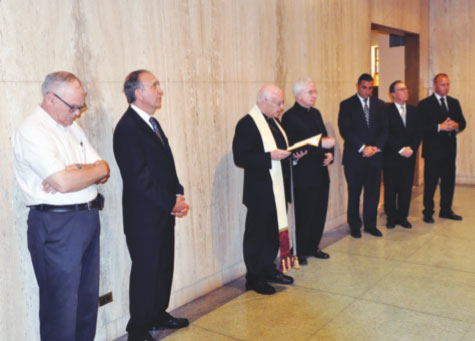
Last week, I told you about the first Bishop of Brooklyn, John Loughlin, as his remains were brought back to the Brooklyn Diocese for entombment.
Along with Bishop Loughlin, the coffins bearing the second and third bishops – Charles E. McDonnell and Thomas E. Molloy – also were moved to the bishops’ crypt at Immaculate Conception Pastoral Center, Douglaston.
Bishop McDonnell, who was Bishop of Brooklyn from 1892 to 1921, was a native of Manhattan, who lived for a short time in Nativity parish, in the Bedford-Stuyvesant section of Brooklyn. His father was a printer.
The future bishop attended North American College in Rome where he was ordained May 19, 1878 for the Archdiocese of New York.
While still a young priest, he was named assistant vicar general and master of ceremonies at the new St. Patrick’s Cathedral. Six years after ordination, he became secretary to Cardinal John McCloskey and later Archbishop Michael Corrigan.
He was ordained as a bishop on April 25, 1891 at St. Patrick’s at the age of 37.
He was described by the Brooklyn Eagle as “learned, judicious, amiable, firm and persuasive.”
At 5 feet, 10 inches, he stood dignified and distinguished in appearance, gentle in manner, and pleasant in conversation. His face, described as a trifle long under a full head of dark hair, was pale and scholarly. His forehead was high; his eyes were grave and kindly blue; his nose was ample and aquiline; his mouth and chin firm.

As new immigrants continued to come to Brooklyn and the area grew, Bishop McDonnell continued the pattern of growth set by Bishop Loughlin.
He was responsible for the establishment of 54 parishes in Brooklyn, 30 in Queens, 21 in Nassau and 13 in Suffolk. He also opened 58 Catholic elementary schools.
Brooklyn’s second ordinary was studious, more fragile physically than his sturdy predecessor. Within the diocese, he was somewhat aloof.
Bishop McDonnell was the first Bishop-Publisher of The Tablet, which first appeared on April 4, 1908. He named it after one of his favorite Church periodicals, The Tablet of London, which still prints today.
Catholic Charities also was begun during his episcopacy.
Msgr. John Sharp in his “History of the Diocese of Brooklyn,” says that Bishop McDonnell lived an austere life. “His meals were frugal, his clothes sometimes well-worn; he received relatively little personal income. It was years before he installed a telephone or used an automobile… He had a childlike simplicity and a genuine humility. He neither sought nor received public attention. He worked silently.”
He had been in failing health the last few years of episcopacy. He would rest in Brentwood and took some time to go to Florida in early 1921. On Oct. 3, 1920, he consecrated Bishop Thomas E. Molloy as an auxiliary bishop for Brooklyn.
He died at the age of 67 on Aug. 8, 1921 in Brentwood with Bishop Molloy at his bedside. He was buried alongside Bishop Loughlin in the downstairs crypt in St. James Pro-Cathedral.
In 1942, the remains of Bishops Loughlin and McDonnell were brought to Huntington and on Aug. 3 of this year they were transferred – along with those of Archbishop Molloy – back to the Brooklyn Diocese.
